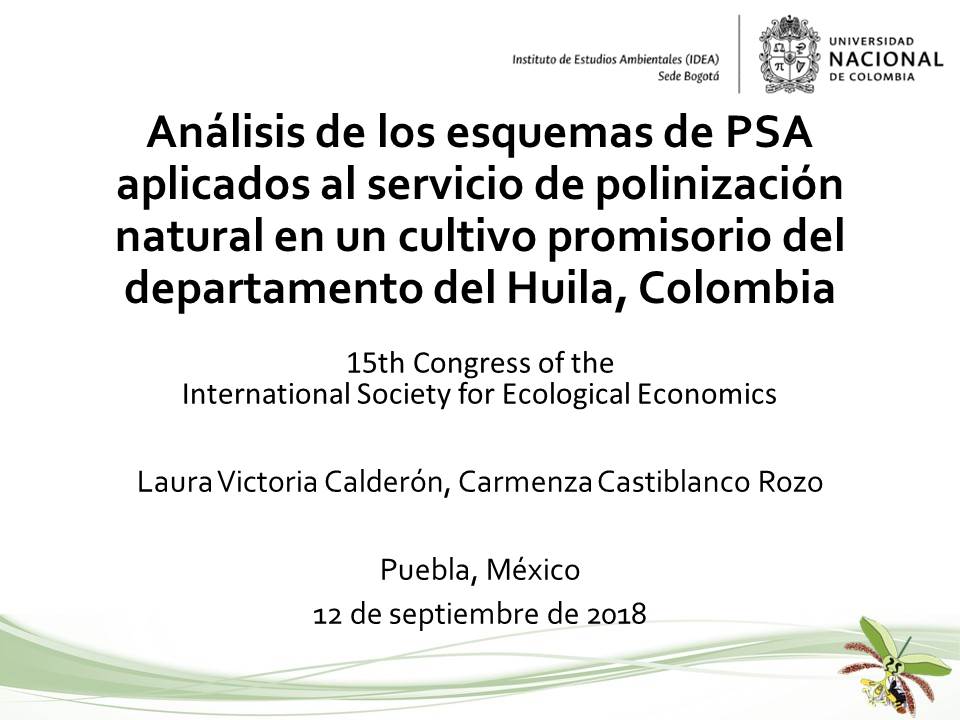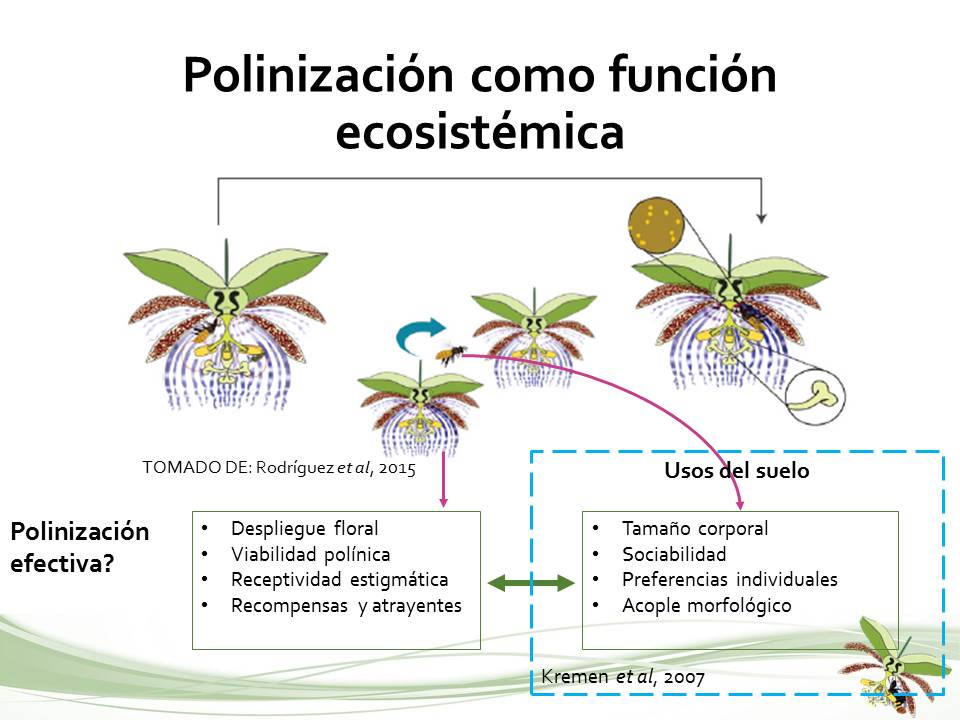by Laura Victoria Calderón Acero & Carmenza Castiblanco Rozo
Presented at the 15th Conference of the International Society for Ecological Economics in the city of Puebla, México, September 10 to 12, 2018


Abstract:
The main objective was to analyze the potentialities and limitations of a PES-like economic instrument for the conservation of the natural pollination service in crops. This was addressed through the following specific objectives: first, identifying the main agroecological, institutional and economic elements that are relevant for the eventual design of a payment scheme for the conservation of natural pollination associated with crops. Second, gathering the perceptions by farmers regarding the real possibilities of adoption of a payment scheme for the natural pollination service in crops of cholupa (Passiflora maliformis).
The study was carried out in the municipality of Rivera, Huila (southwestern Colombia). 15 farms producing cholupa (P. maliformis) were thoroughly characterized in the most important ecosystem and cultural aspects, based on the estimation of the Main Agroecological Structure (MAS) (León-Sicard, 2014). This indicator allowed establishing critical management practices to define the additionally of the particular pollination service in crops and its relationship with the main elements of PES-like schemes. On the other hand, the motivations and perceptions of cholupa producers in the region and the possibilities of success or failure of this type of economic incentives to conservation were identified (through semi-structured interviews).
Critical variables for the management of native pollinators within the crop, weed management practices, pest control and the connection with the MAS were identified as critical variables. Although producers in the region have extensive knowledge and concern for wild bees and the role they play in their crops, the results evidence that an incentive for conservation is necessary to drive a change specifically aimed at the conservation of this ecosystem service. However, several characteristic elements of the PES do not comply with the ecosystem particularities of pollination.
